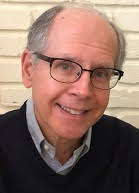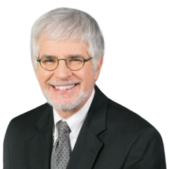

I’m delighted to present this interview with the authors of the important new book Boxed out of the NBA: Remembering the Eastern Professional Basketball League (Rowman & Littlefield Publishers). I can’t say that it was difficult to persuade Syl Sobel and Jay Rosenstein to participate, especially since Jay happens to be my brother!
Although I will write in more detail about the book in a subsequent post, I asked Syl and Jay about their research process, particular things they learned from interviews with former players and coaches, the profound impact that the Eastern League had on so many people (myself included), and how that devotion is playing out on social media.
How hard was it to track down people to interview for the book, and were they surprised to hear from you, and surprised that there was going to be a book about the Eastern League?
We used a lot of tricks from our journalism backgrounds. We did Internet and social media searches and found some people that way. For example, we knew one of our favorite players, Swish McKinney, had the first name “Cleveland.” So we did an Internet search for “Cleveland McKinney,” and found a newspaper article with a quote from Cleveland McKinney who was identified as an assistant principal at McClymonds High School in Oakland, CA. We knew Swish was from Oakland, so we sent an email to the school and asked the principal if he was Swish, and got a reply back that no, he’s not Swish, but his father is and he would put us in touch. We had similar experiences on social media, where we’d find someone with the same name as a player, and it turned out the guy was the son of the former player we were looking for.
We also got a lot of help from the Eastern League Facebook page. Some of the members of the group are in touch with former players and they shared contact information, and some former players are members of the group page and we found them that way. Then, when we spoke with former players we’d ask if they were in touch with other former Eastern Leaguers and most of them were and gave us addresses and phone numbers. We found that many former Eastern Leaguers stayed in touch throughout their lives and remained in basketball circles as coaches and playing in rec leagues. Also, former Eastern League player and now author Charley Rosen gave us contact information for several former players and officials, and former Scranton owner Arthur Pachter pulled out his little black book of players’ phone numbers.
Were they surprised? Yes, to some extent. But really the dominant reaction was “It’s about time!” They were so glad that someone was finally telling the story of the Eastern League, and that some of these little-known players were going to get the recognition they deserved. The Eastern League was an important part of the development of professional basketball, but very few people know about it. Hubie Brown said several times that we were doing a great service by bringing some of these old players back to life. It was a privilege for us to do that.

I was struck by how many of the players and coaches either were teachers during their playing days or afterward. Do you attach any significance to that?
Yes! We noticed the same thing! Clearly not coincidence, and some of them became great coaches. John Chaney and Jim Boeheim, of course. Hubie Brown, Bob Weiss, and M.L. Carr had long coaching careers, as did Jack Ramsay and Jack McCloskey going way back. George Raveling, George Blaney. Howie Landa became one of the winningest community college coaches of all-time, and he and his former high school player, Richie Cornwall, ran a basketball camp with Cornwall’s Syracuse teammate, Dave Bing, including one of the first girls’ basketball camps in the country. John Mathis is a legendary high school coach in New York City. Waite Bellamy was a great high school coach in Florida. Stan Pawlak coached in southern New Jersey. George Bruns is still coaching high school and is a Ph.D. math professor at a community college, and Swish McKinney taught computer science at a community college. Big Bad Bill Green became a high school principal known for turning around a particularly tough school in the Bronx. Tony Upson was a principal who now mentors other principals. Tom Hemans was the head of the New York City Public School Athletic League . . . . The list goes on!
Why? These guys were gym rats. They loved the game, couldn’t get enough of it when they were players. How else do you explain them driving through Pennsylvania, New Jersey, and wherever else on weekend nights in the snow and ice just to play for $100 or so a game? So it makes sense that they couldn’t leave the game when their playing days were over.
But more than that, these are the kind of guys who want to give back. Every one of them had at least one teacher or coach who mentored them and made a difference in their lives. They want to do the same. What came across in our interviews is the character of these men. They were really good people, the kind who would become teachers and coaches and have a positive impact on their communities. Yes, as Ray Scott (another former Eastern Leaguer and NBA coach, by the way) told us, “there were the characters, of course, but there were so many people with character.”
Following the Scranton Miners and the rest of the Eastern League was a very meaningful experience for us while we were growing up. The Eastern League Facebook group, in particular, shows that this was the case for many more people around the country. Has the extent of this struck you, and have you drawn any larger meaning from it?
When we first set out to write this book, we weren’t sure how many readers would be interested in the history of a weekend-only pro basketball league operating long ago (1946-78), primarily in mostly small Pennsylvania towns. But soon we realized that, thanks in large part to the Eastern Basketball League Facebook page, which has over 1,000 members, many former fans, as well as former players, coaches and sports historians, felt the same way about the Eastern League as we did. Active members are having fun posting trivia contests, game photos, news clips, and even cartoons about the league from old newspapers, which always draw attention and comments.
We think part of the attraction is nostalgia: People have fond memories of sitting in the stands as kids and teenagers watching pro basketball games. But the main thing is the realization of how lucky we were to grow up in Eastern League towns and what a unique experience it was. With so few spots available in the NBA, the Eastern Leaguers we watched were some of the best basketball players in the world, and we were getting to watch them up close in small, high school gyms. We got to talk to players after games, see them in restaurants, even host some of them on weekends to save them hotel and meal expenses. And the players who decided to live in the towns where they played became part of the community. So these big-time athletes identified with our little towns. It really meant something to us and built a connection that people who live in big cities don’t get with players on their teams. John Chaney told us that he and his teammates were heroes in Sunbury and it made them feel important. Jim Boeheim said several times what a warm spot he still has for Scranton. Bob Ryan, the Boston sportswriter who is an ESPN basketball analyst, grew up in Trenton and can still cite Wally Choice’s stat line from the first Eastern League game Ryan watched. Two fans we met in Hazleton still have collections of photos of former Hawks players. Those connections were deep and have stayed that way.
